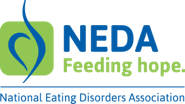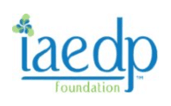Eating disorders are a set of mental illnesses that affect a person’s eating habits and associated thoughts and emotions. People with an eating disorder often obsessively monitor their body shape, weight and food intake.
Millions of Americans deal with eating disorders. According to the National Eating Disorders Association, 10 million men and 20 million women in the United States have a major eating disorder in their lifetime.
Many people with eating disorders turn to drugs to numb physical or psychological pain such as anxiety or depression. But substance abuse can exacerbate their problems and further damage their mental and physical well-being.
Types of Eating Disorders
There are several types of eating disorders, and each has its own causes, symptoms and treatment approaches. These
conditions cause an incessant preoccupation with one’s physical appearance.
Anorexia Nervosa
Anorexia nervosa causes people to view themselves as overweight even when they are significantly underweight. People with anorexia severely restrict their diet and persistently check their weight. Those suffering from the illness
may deal with osteoporosis, low blood pressure or brittle hair and nails.
Bulimia
People with bulimia nervosa consume unusually large amounts of food and then vomit, exercise excessively, use laxatives or avoid eating for long periods of time. Unlike people with anorexia, those with bulimia often maintain a healthy body weight. However, the illness can lead to gastrointestinal problems or severe dehydration.
Binge-Eating Disorder
Binge-eating disorder is the most common type of eating disorder in the United States. Characterized by an inability to stop eating, the disorder causes people to rapidly consume excessive amounts of food over a specific timeframe. Feelings of shame and depression are linked to the disorder.
Body Dysmorphic Disorder
Body dysmorphic disorder causes people to constantly think about their flaws. Those with the disorder fixate on their body image and may spend hours each day critiquing their appearance in a mirror. Although body dysmorphic disorder is not an eating disorder, it can result in one.
Pica
Pica involves regularly eating nonfood items such as cloth, dirt or soap for at least one month. Often occurring
alongside other mental disorders, pica can cause intestinal complications, poisoning or infections.
Avoidant/Restrictive Food Intake Disorder
Avoidant/restrictive food intake disorder manifests in a person’s apathy toward eating, avoidance of certain foods
based on their color or texture, and irrational concerns about choking. Those with this illness may fail to reach
minimum daily nutrition requirements and experience significant weight loss.
Rumination Disorder
People with rumination disorder consistently regurgitate food after meals. As opposed to bulimia, rumination disorder is an involuntary expulsion of food. The illness may be more common among infants or people with an intellectual disorder.
Other Specified Feeding or Eating Disorder
Other specified feeding or eating disorder, formerly called eating disorder not otherwise specified, is a serious mental disorder affecting 40 percent to 60 percent of people who seek treatment for an eating disorder. People with this disorder exhibit symptoms of other eating disorders — and thus face the same risks associated with them — but fail to meet the criteria for an official diagnosis of a specific eating disorder, such as anorexia or bulimia. According to the National Association of Anorexia Nervosa and Associated Diseases, approximately one in ten people diagnosed with EDNOS has a co-occurring substance use disorder.
Ready to make a change?Take the first step and start your recovery today.
Get Help Now
Substance Abuse and Eating Disorders
Research suggests that a relationship exists between eating disorders and addiction. Christina Purkiss, program director at Blue Horizon Eating Disorder Services in Winter Park, Florida, said that substance abuse and eating disorders commonly co-occur.
“The diseases are similar in the sense that they can both be used to escape, numb or avoid unpleasant situations,” Purkiss told DrugRehab.com. “Individuals looking to avoid can get caught in a cycle of using [drugs and alcohol] and acting upon eating disorder symptoms. Ultimately, these are ineffective and dangerous coping methods.”
The National Center on Addiction and Substance Abuse at Columbia University indicated that as many as 50 percent of people with eating disorders also abuse drugs or alcohol, compared with just 9 percent of the general population.
A 2010 study published in the International Journal of Eating Disorders examined the prevalence of drug addiction in women with several forms of anorexia. The results showed that anorexic women who purged were more likely to report drug use than those who did not purge. Purging behaviors include forced vomiting and misuse of laxatives, enemas or diuretics.
On college campuses, a number of students use drugs or alcohol to escape their eating disorders. Thomas Hall, director of Substance Abuse Prevention, Treatment and Recovery at the University of Central Florida, told DrugRehab.com that many UCF students with eating disorders use cocaine or Ritalin.
He added that many of these students are young women who suffer from anorexia or bulimia.
A 2015 study published in the journal Psychiatry Research investigated the prevalence of other psychiatric disorders among men and women with eating disorders. Researchers found that more than 13 percent of female patients with bulimia had a substance use disorder.
About one-third of men and 7 percent of women diagnosed with the binge-eating/purging type of anorexia met the criteria for alcohol dependence, the study showed.
Although substance use may cause short-term euphoria, people with eating disorders who self-medicate with drugs or alcohol could face a variety of long-term consequences. For example, co-occurring disorders involving bulimia and addiction are associated with higher rates of anxiety, antisocial behavior and impulsivity.

Who Can Be Affected by Eating Disorders?
Eating disorders often begin during adolescence or young adulthood in girls and women, but they can develop among people of all ages and backgrounds. Eating disorders also occur in men, young children and athletes.
Young People
Research shows that eating disorders can occur in children. A study funded by the National Heart, Lung, and Blood Institute found that 40 percent of surveyed 9- and 10-year-old girls reported that they have tried to lose weight.
Blue Horizon Eating Disorder Services has treated children as young as 9 years old. But teens and young adults comprise its largest client group, according to Sara Dreier, marketing coordinator at the rehab center.
Teens and young adults are particularly vulnerable to eating disorders. According to a 2011 study funded by the National Institute of Mental Health, eating disorders affect about 3 percent of U.S. teens. The report stated that most individuals do not receive treatment for their eating condition.
- Whites reported the highest rate of anorexia.
- Hispanics reported the highest rates of bulimia.
- Most of those with an eating disorder also had another mental health disorder, such as depression.
Purkiss said that young people face unique challenges in society today. For example, social media can negatively
affect someone’s body image and self-esteem. And various mobile applications often promote thin bodies.
“Social media does not cause eating disorders, but [it] can certainly be a contributor,” said Purkiss.
In addition to teens, college students are often diagnosed with eating disorders. According to the Women’s Center at Boston College, about 20 percent of college-aged women have an eating disorder. Many of these individuals develop this illness
while attempting to cope with or thrive in a new environment, such as a college campus.
Women
Research has shown that women are more likely than men to develop an eating disorder. More specifically, these illnesses generally occur in young women.
A 2009 study published in the International Journal of Eating Disorders examined self-reported eating disorder symptoms among 3,714 women and 1,808 men. Researchers found that women were more likely than men to report binge eating, fasting, vomiting or body checking.
A survey by SELF Magazine and the University of North Carolina at Chapel Hill studied eating behaviors among more than 4,000 U.S. women aged 25 to 45. The results showed that 65 percent of respondents reported having disturbed eating behaviors. An additional 10 percent of participants reported symptoms similar to those of anorexia, binge-eating disorder and bulimia.
Men
Men have also been affected by eating disorders. Like women, many men deal with behavioral, emotional and physical problems that can lead to an eating disorder.
Men comprise 10 percent to 20 percent of people with anorexia and bulimia and up to 40 percent of people with binge-eating disorder, according to the University Counseling Center at Florida State University. In the United States, about 1 million men currently have an eating disorder.
However, Purkiss warns that statistics on the prevalence of eating disorders in men may not be accurate. She says many men do not recognize their own eating disorders or fail to seek professional treatment because of the stigma that these disorders affect only women.
“In our culture, just as women feel the pressure to strive toward the thin ideal, men experience similar pressure
to be extremely fit,” said Purkiss.
Many men with eating disorders obsess over weight lifting and gaining body mass, which can progress to a body image disorder known as muscle dysmorphia. Those with muscle dysmorphia are more likely to turn to steroids to bulk up, and teen boys often are affected by the disorder.
Athletes
Participating in sports has many benefits. It can boost self-esteem, improve fitness and foster new friendships. But athletes who constantly strive to increase their performance may obsess over their weight, food intake and overall looks. This can result in an eating disorder.
A 2004 study published in the Clinical Journal of Sport Medicine found that elite athletes in Norway were more likely than the general Norwegian population to have an eating disorder. The prevalence of these disorders is higher among female athletes than male athletes.
Athletes in sports such as wrestling, gymnastics, bodybuilding and figure skating have an increased risk of developing an eating disorder. Having low self-esteem, dieting relentlessly and training with a coach who emphasizes success over sportsmanship can also increase the risk of developing an eating disorder.
LGBTQ+ Community
LGBTQ+ people may deal with a number of issues that affect their physical and mental health, including discrimination, bullying and body image problems. These factors may also increase their risk for developing an eating disorder.
A study by Columbia University Mailman School of Public Health found that gay and bisexual men may be more likely than straight men to have an eating disorder.
The report indicated that more than 15 percent of gay and bisexual men experienced symptoms of anorexia, binge-eating disorder or bulimia at some point in their lives. Less than 5 percent of heterosexual men had these symptoms.
Researchers also found that nearly 10 percent of lesbian and bisexual women reported having a subclinical eating disorder, in which a person has some symptoms of an eating disorder without an official diagnosis. Eight percent of straight women reported having a subclinical eating disorder.
The National Association of Anorexia Nervosa and Associated Disorders states that 16 percent of transgender college students have an eating disorder.
Getting Help
If you think someone has an eating disorder, talk to them. If help is needed, get in contact with a guidance counselor
or counseling center at school, a professional psychiatrist or a
treatment center. Eating disorders may damage the body temporarily, but overcoming one can lead to a long
and healthy life.
Get Help For a Friend
Barriers to Treatment: Stigma and Shame
People with eating disorders face many barriers to treatment, including stigma and feelings of shame.
In 2000, a study published in The British Journal of Psychiatry analyzed how the general public views people with mental illnesses, including substance abuse, dementia, schizophrenia, depression and eating disorders. Researchers found that people largely view eating disorders as self-inflicted or controllable problems.
Fifteen years later, a study published in the International Journal of Eating Disorders found that many individuals suffering from bulimia felt they had no control over their illness. Male respondents said their eating disorder made them feel less masculine.
Negative feelings and emotions are common among people with eating disorders. Thomas Hall says feelings of guilt and shame overwhelm many UCF students who have eating disorders.
“The shame is significant,” he said. “There’s a sense of ‘I am who people think I am.’”
Erin Hall, who plans substance-free social events at UCF, agrees. She says people with eating disorders often experience shame, guilt and fear. They also deal with isolation, which makes seeking help more difficult.
She noted the sense of control these individuals possess: They can control their eating, sometimes through binging and purging.
“The thought of giving up the control is terrifying,” Erin Hall told DrugRehab.com. “When you give up control, you feel vulnerable.”
Purkiss believes stigma plays a significant role in preventing people with eating disorders from seeking treatment. Society celebrates thinness. People are praised for losing weight or exercising excessively, even when the activity has become an obsession.
“This can be used to normalize eating disorder symptoms and, possibly, keep someone in denial who is struggling,” said Purkiss.
How Do I Know if I Have an Eating Disorder?
Some people may not realize they have an eating disorder. However, eating patterns could help someone recognize indicators of an eating disorder.
- Eating in secret or isolation
- Checking the mirror frequently for perceived flaws
- Avoiding normal social activities
- Exercising excessively
- Skipping meals
People with an eating disorder also constantly worry about being overweight or underweight. They may excessively focus on eating healthy or harbor negative feelings about their eating behaviors.
What Causes an Eating Disorder?
A variety of factors contribute to the development of an eating disorder. Pressure from parents or peers, mental
health problems or trauma may play a role. Body portrayals seen in the media could motivate individuals to go
great lengths to achieve a certain body image.
Genetics may also cause an eating disorder. People with siblings or parents who have an eating disorder may be more
likely to develop one during their lifetime. In fact, anorexia is eight times more common in people with relatives
who have had the illness.
Biological factors may also be responsible. The HPA system in the brain releases chemical messengers called neurotransmitters that control appetite, stress and mood. When people have abnormalities related to the neurotransmitters serotonin, norepinephrine and dopamine, they may not experience pleasure from eating. Medical experts have observed extensive abnormalities in the HPA system among people with anorexia.
How to Treat Eating Disorders
Eating disorder treatment follows the same principles as treatment for substance use disorders. The goal of treatment is to change the behaviors related to the eating disorder.
People with eating disorders have taught themselves to ignore their nutritional needs. Proper eating disorder treatment teaches them healthy eating habits and shows them how to listen to their bodies’ hunger signals.
“We want to train them to listen to their bodies and what their bodies are telling them,” said Cortina Peters, clinical director of the Orlando Recovery Center in Orlando, Florida.
Eating disorders often stem from a person’s negative body image and their belief that the food they eat is the problem. Eating disorder treatment specialists work with people to reshape their negative attitude toward food into a
positive one.
“We want to desensitize them to the fear of food,” said Peters. “Oftentimes, it’s the fear of what the food is going to do to me. We want to separate from that.”
Treatment for eating disorders involves improving nutrition, ceasing purging habits and reducing excessive exercise. Additionally, psychotherapy approaches can teach individuals with food-related disorders to change their thoughts and emotions related to eating behaviors.
Cognitive Behavioral Therapy
CBT is used to help people identify, understand and change dysfunctional behaviors associated with problems such as eating disorders, substance abuse or depression. This highly structured psychotherapy approach teaches clients the skills needed to improve their quality of life.
For those with eating disorders, the goal of CBT is to reduce unhealthy responses to food. For example, bulimic clients who participate in CBT may gradually work toward eating three meals per day while monitoring their food intake
and unhealthy reactions to eating. They also learn to identify false attitudes related to their body image that may affect their eating behaviors.
Interpersonal Therapy
Health providers use interpersonal therapy when they suspect a mood disorder, such as depression or anxiety, is the
underlying cause of a patient’s eating disorder. The psychotherapy approach also identifies social factors that
may have influenced eating habits, but it does not focus on food or body image.
Through interpersonal therapy, clients learn to develop a sense of independence. They also learn how to deal with
uncertain circumstances. However, studies show that this therapy approach is not as effective as CBT for binge-eating
disorder or bulimia. It may be useful for some people with anorexia.
Motivational Enhancement Therapy
Motivational enhancement therapy is designed to reduce clients’ uncertainties about entering treatment and stopping
substance abuse. Available in individual or group settings, this therapy approach helps people understand and alter their eating behaviors.
Other Treatment Approaches
Family therapy can also be part of eating disorder treatment. This approach helps family members better understand
the intricacies of eating disorders and better communicate with loved ones who have an eating disorder.
Research shows that mood stabilizers, antipsychotics and antidepressants approved by the Food and Drug Administration can be effective in treating eating disorders and other mental health problems such as depression.
A 2015 study published in the Indian Journal of Psychiatry stated that fluoxetine, a drug commonly sold under the
brand name Prozac, could be helpful for preventing relapse in women who have restored their weight after receiving
treatment for anorexia. The report also stated that antidepressants in high doses may be effective in treating people with bulimia or binge-eating disorder.
People with an eating disorder should seek help immediately. Failing to get help for a food-related disorder can
result in a number of physical and mental health problems. Those who seek professional assistance have a greater
chance of reaching recovery.
Eating Disorder Resources
A number of programs and initiatives provide education, support and outreach to people suffering from eating disorders.

National Eating Disorders Association
The National Eating Disorders Association is an organization dedicated to supporting individuals and families affected by eating disorders. The nonprofit also campaigns to educate people on the dangers of eating disorders, improve access to ED treatment and increase research funding for these diseases.

The National Association of Anorexia Nervosa and Associated Disorders
The National Association of Anorexia Nervosa and Associated Disorders aims to provide support, awareness and advocacy to people with eating disorders. The organization also offers referrals and provides education and prevention to the community.

The Alliance for Eating Disorders Awareness
The Alliance for Eating Disorders Awareness offers programs and activities that provide outreach, education
and early intervention for all eating disorders. The nonprofit works to eliminate stigma and promote access to
treatment for those vulnerable to, struggling with or recovering from an eating disorder.

The Academy for Eating Disorders
The Academy for Eating Disorders is dedicated to promoting eating disorder education, treatment and prevention. The organization comprises health professionals who work with people suffering from eating disorders.

International Association of Eating Disorders Professionals Foundation
The International Association of Eating Disorders Professionals Foundation provides education and training to professionals who treat problems associated with eating disorders. The organization also promotes public and professional awareness of eating disorders.

The Eating Disorder Foundation
The Eating Disorder Foundation offers support groups, workshops and classes for people struggling with eating
disorders. The organization also provides referral services. Its website has a wealth of information about eating
disorders, including signs, symptoms and health consequences.

Project Heal
Project Heal provides grants to people with eating disorders who cannot afford treatment. Its mission is to promote healthy body image and self-esteem and to help people understand the importance of treatment and recovery.

Binge Eating Disorder Association
Binge Eating Disorder Association is an organization dedicated to providing leadership to increase the recognition, prevention and treatment of eating disorders. The nonprofit also looks to increase awareness and eliminate the stigma associated with eating disorders.
Medical Disclaimer: DrugRehab.com aims to improve the quality of life for people struggling with a substance use or mental health disorder with fact-based content about the nature of behavioral health conditions, treatment options and their related outcomes. We publish material that is researched, cited, edited and reviewed by licensed medical professionals. The information we provide is not intended to be a substitute for professional medical advice, diagnosis or treatment. It should not be used in place of the advice of your physician or other qualified healthcare provider.
 Addiction
Addiction
 Treatment
Treatment
 Faith & Religion
Faith & Religion
 Active Recovery
Active Recovery
 Our Community
Our Community














